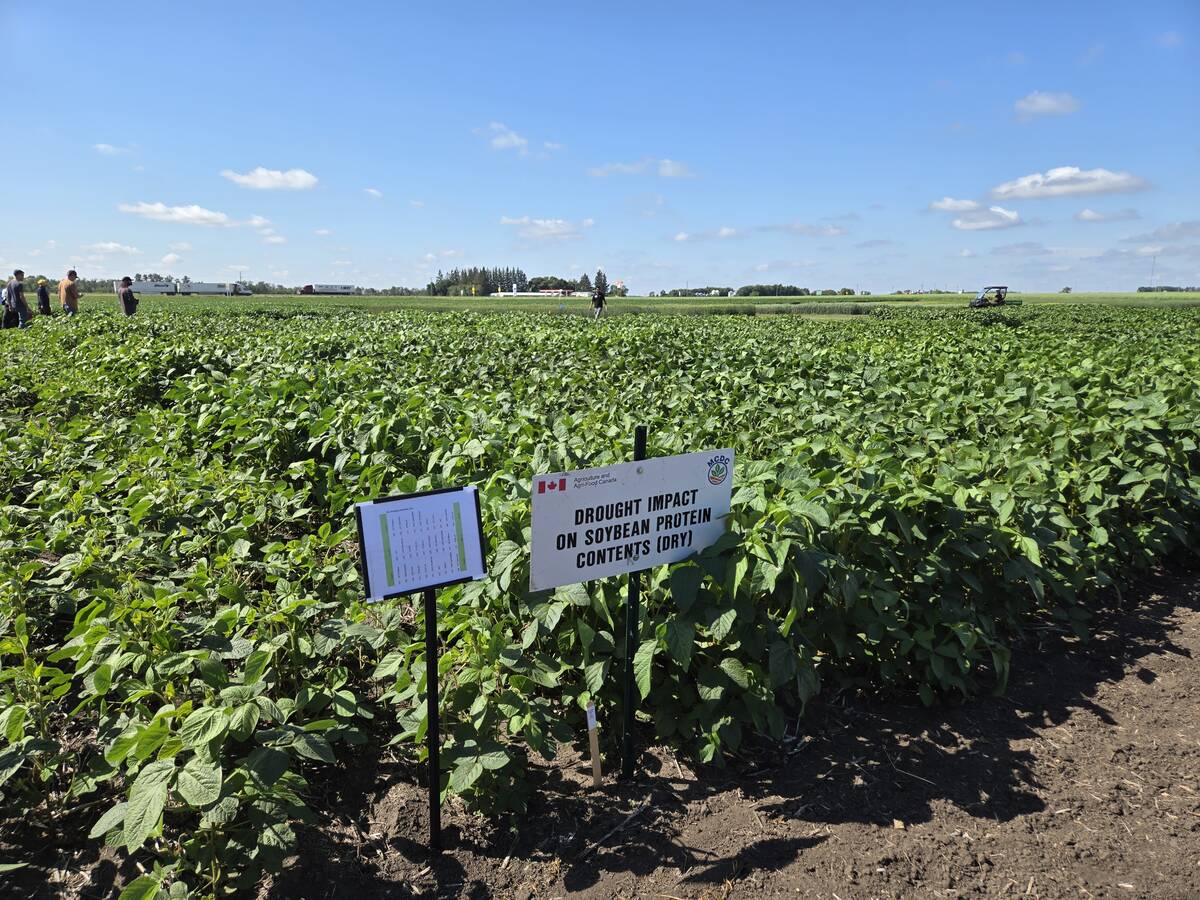GENEVA – For a week in late July, ministers from some key World Trade Organization countries, including Canada, have been summoned to meet here in a last-ditch effort to find agreement for a new agricultural and industrial tariff and subsidy cutting deal.
Agreement on “modalities” that would outline key elements of subsidy and trade barrier reduction appears to be a long shot in the four weeks available, since there remain significant gaps among many countries on politically sensitive issues they have been loath to compromise on during six years of negotiations.
Read Also

Carberry field day looks for agriculture solutions
Manitoba farmers explored research solutions for resilient crops, perpetual agronomic issues and new kinds of agricultural products at a field day at the Manitoba Crop Diversification Centre in Carberry on Aug. 6.
Even if a deal-in-principle emerges in Geneva this month, WTO senior officials concede that the goal of completing the detailed text and country ratification by the end of 2008, when the current United States administration and Congress leaves office, is now out of reach.
It means that the next U.S. administration and Congress would inherit any deal and the fall American election is expected to produce a more protectionist Washington.
As well, WTO-hostile France takes over the presidency of the European Union this week, within days of a statement from French president Nicolas Sarkozy denouncing agricultural proposals on the WTO table as unacceptable to Europe.
Ireland’s president has threatened to veto any deal and many countries are wary of agreeing to a deal that exposes their negotiating bottom line when they cannot be sure the U.S. can deliver on its agreement.
For WTO director general Pascal Lamy, calling a ministerial meeting with just three week’s notice is a huge gamble. His fear is that if a deal is not reached before the U.S. election officially kicks off in early September, momentum could drain out of the process for several years.
On June 25, he privately told some WTO members that while he believes countries will begin to focus now on making the necessary compromises, failure to do so by the ministerial meeting could mean the collapse of the negotiations.
In a June 23 interview, Lamy was cautious in his assessment.
“Where we are now – just compare it to where we were three months ago or six months ago – where we are now, I believe we can cross the bridge,” he said.
“I am not saying we will cross it 100 percent. I’m not sure about this because it’s a delicate balancing exercise. But I think it’s feasible.”
New Zealand ambassador and agricultural negotiations chair Crawford Falconer said a deal is possible only if negotiators are given instructions by their governments to make compromises they have so far avoided.
“They have just days in which to do this,” Falconer said.
Australian ambassador Bruce Gosper, chair of the WTO general council, said June 24 that the key will be whether governments have the courage to make compromises that could be tough to sell at home.
“We need clear evidence that there is political will and so far, we have heard words but not seen a clear expression of political will through action,” he said. “And we will need texts that show the way to a deal and we are not at that stage yet.”
While Falconer may produce a new text late this week after talks with negotiators, the current text leaves unresolved crucial issues including the depth and breadth of tariff and subsidy cuts, as well as crucial gaps in industrial tariff talks.
Canada is expected to send both agriculture minister Gerry Ritz and recently appointed trade minister Michael Fortier to the July 21-25 meeting. It could be a make-or-break time for Canada’s insistence that it wants an aggressive market-opening result for exporters, while maintaining protections limiting imports of dairy, poultry and egg products.
If a deal looks possible, Canada’s ministers will be faced with the difficult choice of deciding whether to accept supply management compromises supported by all other countries in the interests of a broader deal or scuttle a deal where unanimity is required. They may also have to decide whether to accept United States and European Union demands that state trading enterprise export monopolies be ended by 2013.
Lobbyists from Canada’s farm community are planning to be on hand to deliver the usual divided Canadian message – exporters calling for aggressive cuts in subsidies and protective tariffs while supply management defenders insist their protections not be touched.
Canadian exporters say a deal would open up at least $3 billion annually in new export opportunities. Dairy, poultry and egg producers say a deal that reduces their protection, would jeopardize their multibillion-dollar industries.














